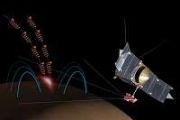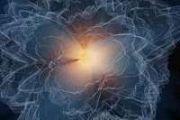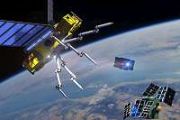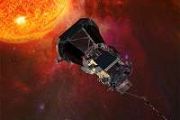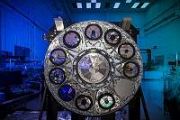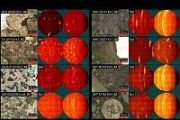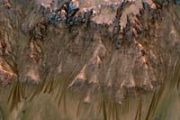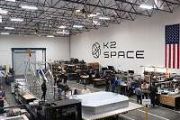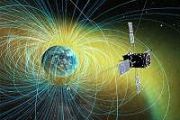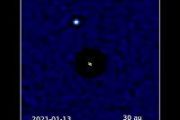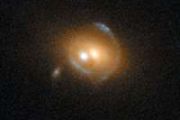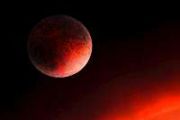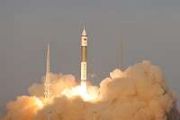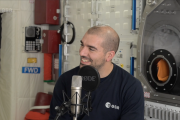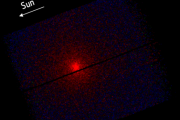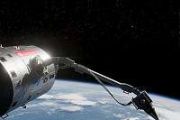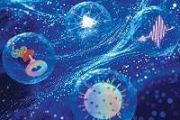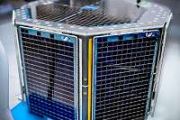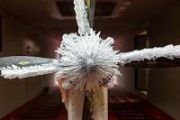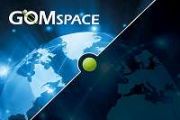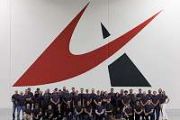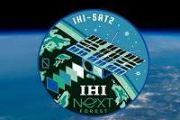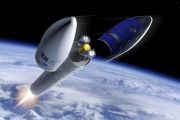
Copernical Team
NASA's Crew-5 mission casts long exposure light beam
 In this 20-second exposure from Oct. 5, 2022, a SpaceX Falcon 9 rocket carrying the company's Crew Dragon spacecraft is launched on NASA's SpaceX Crew-5 mission from our Kennedy Space Center in Florida to the International Space Station (ISS).
This is the fifth crew rotation mission of the SpaceX Crew Dragon spacecraft and Falcon 9 rocket to the ISS as part of the agency's Commercial Crew
In this 20-second exposure from Oct. 5, 2022, a SpaceX Falcon 9 rocket carrying the company's Crew Dragon spacecraft is launched on NASA's SpaceX Crew-5 mission from our Kennedy Space Center in Florida to the International Space Station (ISS).
This is the fifth crew rotation mission of the SpaceX Crew Dragon spacecraft and Falcon 9 rocket to the ISS as part of the agency's Commercial Crew Rocket Lab successfully launches 31st Electron rocket
 Rocket Lab USA, Inc. (Nasdaq: RKLB) has broken its annual launch record with the launch of "It Argos Up From Here," a dedicated launch for General Atomics Electromagnetic Systems (GA-EMS). The mission was Rocket Lab's 31st Electron launch overall and the eighth for the year to date, besting the company's previous record of seven launches in 2020. Rocket Lab has now successfully launched a missio
Rocket Lab USA, Inc. (Nasdaq: RKLB) has broken its annual launch record with the launch of "It Argos Up From Here," a dedicated launch for General Atomics Electromagnetic Systems (GA-EMS). The mission was Rocket Lab's 31st Electron launch overall and the eighth for the year to date, besting the company's previous record of seven launches in 2020. Rocket Lab has now successfully launched a missio NASA's Chandra Adds X-ray Vision to Webb Images
 In the summer of 2022, NASA's James Webb Space Telescope released images from some of its earliest observations with the newly commissioned telescope. Almost instantaneously, these stunning images landed everywhere from the front pages of news outlets to larger-than-life displays in Times Square.
Webb, however, will not pursue its exploration of the universe on its own. It is designed to w
In the summer of 2022, NASA's James Webb Space Telescope released images from some of its earliest observations with the newly commissioned telescope. Almost instantaneously, these stunning images landed everywhere from the front pages of news outlets to larger-than-life displays in Times Square.
Webb, however, will not pursue its exploration of the universe on its own. It is designed to w Milky Way's graveyard of dead stars found
 The first map of the 'galactic underworld' - a chart of the corpses of once massive suns that have since collapsed into black holes and neutron stars - has revealed a graveyard that stretches three times the height of the Milky Way, and that almost a third of the objects have been flung out from the galaxy altogether.
"These compact remnants of dead stars show a fundamentally different dis
The first map of the 'galactic underworld' - a chart of the corpses of once massive suns that have since collapsed into black holes and neutron stars - has revealed a graveyard that stretches three times the height of the Milky Way, and that almost a third of the objects have been flung out from the galaxy altogether.
"These compact remnants of dead stars show a fundamentally different dis Potential source of 'shock-darkened' meteorites has implications for asteroid deflection
 When the Chelyabinsk fireball exploded across Russian skies in 2013, it littered Earth with a relatively uncommon type of meteorite. What makes the Chelyabinsk meteorites and others like them special is their dark veins, created by a process called shock darkening. Yet, planetary scientists have been unable to pinpoint a nearby asteroid source of these kinds of meteorites - until now.
In a
When the Chelyabinsk fireball exploded across Russian skies in 2013, it littered Earth with a relatively uncommon type of meteorite. What makes the Chelyabinsk meteorites and others like them special is their dark veins, created by a process called shock darkening. Yet, planetary scientists have been unable to pinpoint a nearby asteroid source of these kinds of meteorites - until now.
In a NASA's Juno gets highest-resolution close-up of Jupiter's moon Europa
 Observations from the spacecraft's pass of the moon provided the first close-up in over two decades of this ocean world, resulting in remarkable imagery and unique science.
The highest-resolution photo NASA's Juno mission has ever taken of a specific portion of Jupiter's moon Europa reveals a detailed view of a puzzling region of the moon's heavily fractured icy crust.
The image cove
Observations from the spacecraft's pass of the moon provided the first close-up in over two decades of this ocean world, resulting in remarkable imagery and unique science.
The highest-resolution photo NASA's Juno mission has ever taken of a specific portion of Jupiter's moon Europa reveals a detailed view of a puzzling region of the moon's heavily fractured icy crust.
The image cove JPL developing more tools to help search for life in deep space
 A team at the Lab has invented new technologies that could be used by future missions to analyze liquid samples from watery worlds and look for signs of alien life. Are we alone in the universe? An answer to that age-old question has seemed tantalizingly within reach since the discovery of ice-encrusted moons in our solar system with potentially habitable subsurface oceans.
But looking for
A team at the Lab has invented new technologies that could be used by future missions to analyze liquid samples from watery worlds and look for signs of alien life. Are we alone in the universe? An answer to that age-old question has seemed tantalizingly within reach since the discovery of ice-encrusted moons in our solar system with potentially habitable subsurface oceans.
But looking for A day at the beach for life on other worlds
 New simulations show that truly Earth-like exoplanets with oceans and continents, and beaches along the boundaries, may be much more common around red dwarfs than previously expected. This means ongoing and future exoplanet survey missions can expect to find multiple Earth-analogs for further study before the end of the decade.
The "habitable zone" is defined as the range of orbits around
New simulations show that truly Earth-like exoplanets with oceans and continents, and beaches along the boundaries, may be much more common around red dwarfs than previously expected. This means ongoing and future exoplanet survey missions can expect to find multiple Earth-analogs for further study before the end of the decade.
The "habitable zone" is defined as the range of orbits around Overlapping galaxies VV 191 in Webb and Hubble composite image
 By combining data from the NASA/ESA/CSA James Webb Space Telescope and the NASA/ESA Hubble Space Telescope, researchers were able to trace light that was emitted by the large white elliptical galaxy on the left through the spiral galaxy on the right and identify the effects of interstellar dust in the spiral galaxy. This image of galaxy pair VV 191 includes near-infrared light from Webb, and ult
By combining data from the NASA/ESA/CSA James Webb Space Telescope and the NASA/ESA Hubble Space Telescope, researchers were able to trace light that was emitted by the large white elliptical galaxy on the left through the spiral galaxy on the right and identify the effects of interstellar dust in the spiral galaxy. This image of galaxy pair VV 191 includes near-infrared light from Webb, and ult Astronomers find a "cataclysmic" pair of stars with the shortest orbit yet
 Nearly half the stars in our galaxy are solitary like the sun. The other half comprises stars that circle other stars, in pairs and multiples, with orbits so tight that some stellar systems could fit between Earth and the moon.
Astronomers at MIT and elsewhere have now discovered a stellar binary, or pair of stars, with an extremely short orbit, appearing to circle each other every 51 minu
Nearly half the stars in our galaxy are solitary like the sun. The other half comprises stars that circle other stars, in pairs and multiples, with orbits so tight that some stellar systems could fit between Earth and the moon.
Astronomers at MIT and elsewhere have now discovered a stellar binary, or pair of stars, with an extremely short orbit, appearing to circle each other every 51 minu 
